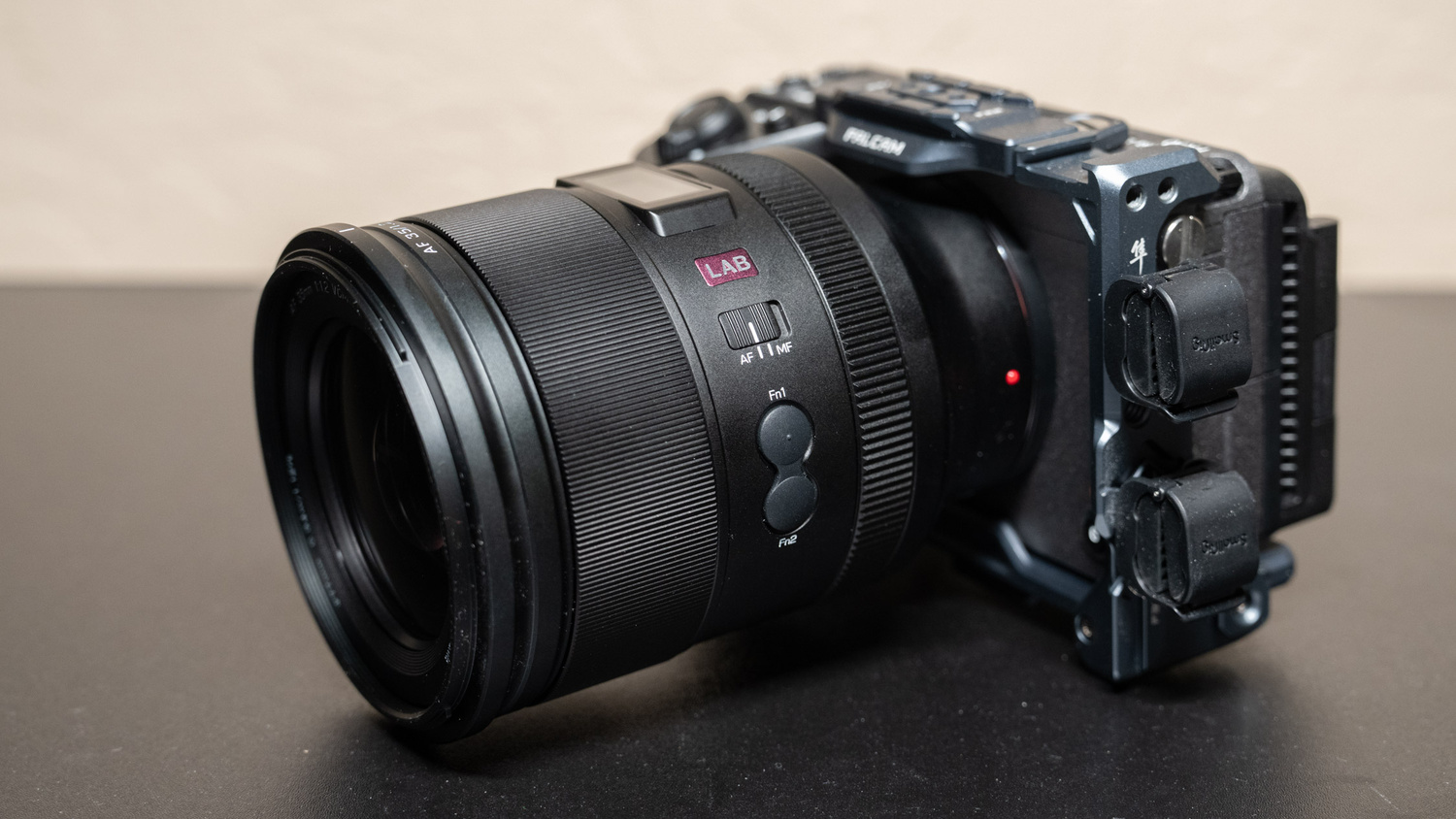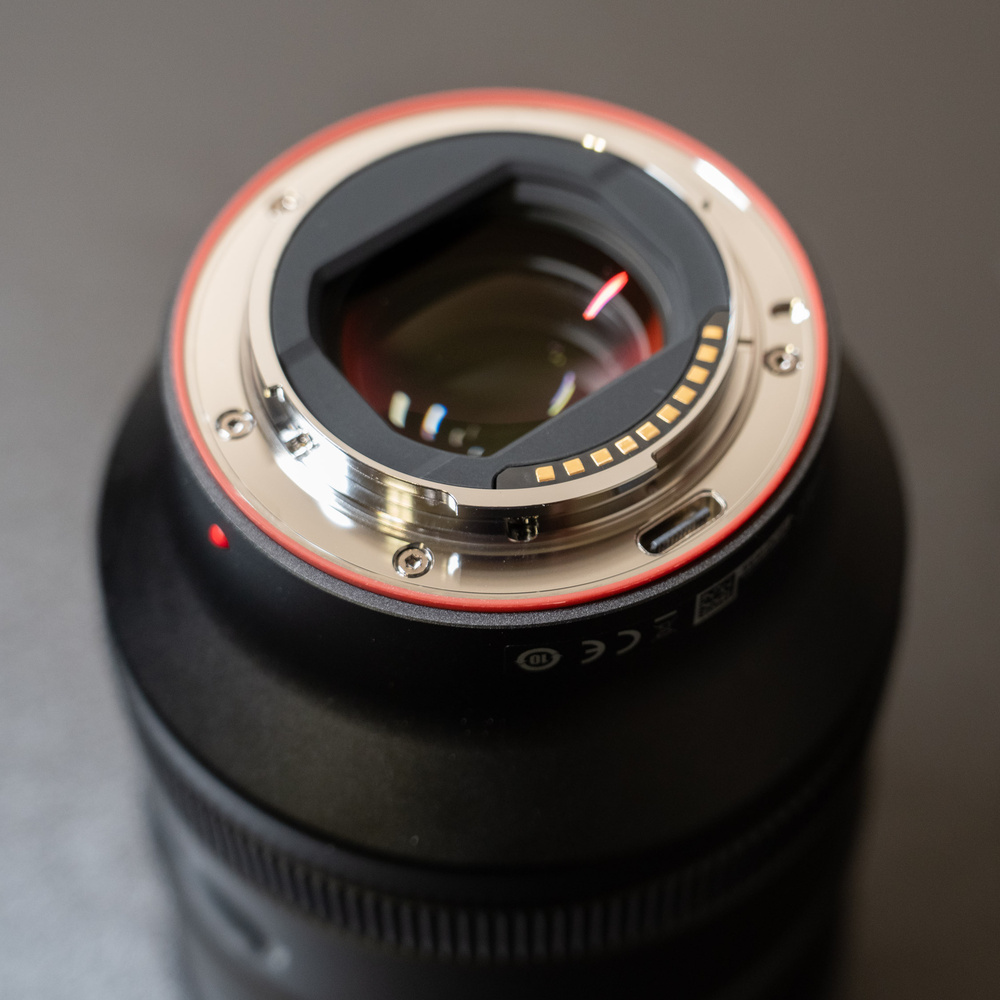Lenses like the Sigma 35mm f/1.2 Art and Sony 35mm f/1.4 GM have long dominated the fast 35mm space on Sony E-mount. But Viltrox, with its new 35mm f/1.2 FE LAB, is aiming right at the high end. Is this latest entry in Viltrox’s already impressive LAB series a competitor for the best-performing 35mm on E-mount?
Specifications and Design
The Viltrox LAB 35mm f/1.2 is the second entry in Viltrox’s premium "LAB" series, coming after the well-regarded 135mm f/1.8. It makes a strong, albeit hefty, first impression. The build quality feels high end, with a magnesium-aluminum alloy body, weather sealing, and solid feel in the hand. At around 920 g, it’s not light, but it’s still more manageable than Sigma’s 1,600 g+ equivalent.

The lens features an OLED display for focus distance and aperture, along with a pair of customizable buttons and a switch for toggling between AF and MF. The 77mm filter thread and included bayonet hood round out a professional package. Using more common 77mm filters is a definite plus, as it simplifies your kit and saves money, especially for those already invested in that size, when compared to 82 or 86mm filters.

One of the only hiccups in design is the aperture ring. While it supports clicked and de-clicked modes, the implementation leaves room for refinement. The ring can feel inconsistent, and in real-world use, I found myself continuing to just use camera controls (although I rarely use the aperture ring on any lens).
Also present on the 35mm, just like on the 135mm LAB, is the USB-C port in the mount. This allows for firmware updates without needing a dock. You can go even further by updating wirelessly via Viltrox’s iOS or Android app.

Lens Performance
Optical performance is the big story here. This is one of the sharpest 35mm primes I’ve used, regardless of price. The 35mm continues the LAB series concept of an “optics-first” lens line, where almost every decision in design seems tailored to give the best optical performance. Setting the bar so high for optics, while keeping quality-of-life features like great AF performance and avoiding making the lenses prohibitively expensive, is an impressive balancing act from Viltrox.
Center sharpness at f/1.2 is excellent, and even wide open, it delivers good contrast and detail across most of the frame. Stop down just a little and performance gets even better, with great results already coming by f/2.

Autofocus is another win, being both very fast and quiet. Viltrox’s use of four Voice Coil Motors results in snappy and confident focusing, even in challenging lighting. Tracking on Sony bodies like the a7R V works as well as can be expected, with the only limitation being a maximum burst rate of 15 fps, something worth noting only for the sports and event shooters running the latest Sony flagship bodies.
Autofocus also performed well when wide open and in low light, with the camera able to nail focus on even thin slices (think eyes, rings, or flowers) at f/1.2.
Flare resistance is a standout feature. For a fast lens with a relatively complex optical formula, the LAB 35mm keeps contrast high and artifacts to a minimum, even when shooting directly into light sources.

There’s moderate vignetting at f/1.2 of around 2 stops, which can be easily corrected with modern sensors. Stopping down to f/2 reduces any vignetting to near-negligible levels.
Chromatic aberration performance is also respectable. Both longitudinal and lateral chromatic aberration are impressively well controlled, with backgrounds remaining free of distracting color fringing. On one or two shots, I could provoke a tiny bit of yellow/blue fringing on out-of-focus areas at f/1.2, but this required me to try to bring it out.

The bokeh itself is good, with natural-looking specular highlights and pleasing background blur. At f/1.2, you can get strong subject separation even at moderated distances, with the in-focus subject having great contrast and sharp features against a pleasantly smoother background. The design tradeoff of such smooth bokeh also means that sunstars are soft and undefined, a result of the lens’s 11 rounded blades.

Coma and distortion are both handled reasonably well. There’s a bit of coma wide open, but it clears up quickly by f/2. Distortion is mild and correctable, and Adobe profiles should be available soon. The slightly wavy, mustache-like distortion will be a little annoying to correct manually, but even uncorrected, I never noticed it disrupting my shots.
Comparison to Sony and Sigma
Compared to Sony’s 35mm f/1.4 GM, the Viltrox LAB is sharper in most areas and offers a full stop more light. The tradeoff? Sony’s lens is considerably smaller and lighter. But if you’re chasing low-light performance or subject separation, the Viltrox gives you more of both. Also, remember Sony deliberately nerfs third-party continuous shooting, with Sony’s 35mm capable of working at higher frame rates on bodies like the a1 or a9, and the Viltrox lens being limited to 15 fps. While less of a consideration for a 35mm compared to something like a 70–200mm, it’s still worth a mention, if just to get Sony to abandon this consumer-unfriendly policy.
The Sigma 35mm f/1.2 Art is a more direct competitor, being identical in aperture and similar in optical ambition. The Viltrox matches or beats the Sigma in flare control, size, and weight, all while undercutting it by roughly $500 based on MSRP when the Sigma was available. The Sigma does retain a slight edge in coma control, which might matter to astrophotographers. But for weddings, portraits, and general low-light shooting, the Viltrox is a more compelling option.
Sigma also makes the 35mm f/1.4 DG DN, a competent and affordable option. Compared to Viltrox’s 35mm, the Sigma comes in a little cheaper and a good bit smaller, but gives up the fun factor of an f/1.2 aperture. Sigma’s lens also has a bit worse longitudinal chromatic aberration. For some working uses, like wedding photography, I’d think the weight savings of the Sigma might just be worth the small downgrade in image quality. The Viltrox, however, offers a level of image quality even beyond the Sigma 35mm, along with even more subject isolation at f/1.2, for a near-enough price difference.
Conclusion

The LAB 35mm f/1.2 is a professional-grade lens at a price point that makes it viable for serious enthusiasts. It’s sharp and fast, with every feature you could want (and even some you didn’t know you needed, like an OLED display on top). The only real drawback is the heftier size and weight compared to Sony’s slower 35mm f/1.4 or Sigma’s 35mm f/1.4.
Overall, Viltrox might be putting out some of the most exciting lenses in recent memory, with the Air line delivering great performance in a compact package, and this second entry in the LAB line continues to offer best-in-class optics at unprecedented pricing.
The LAB 35mm f/1.2 is available for purchase now from B&H.
What I Liked
-
Outstanding sharpness, even at f/1.2
-
Fast and accurate autofocus
-
Excellent flare resistance
-
High-end build with weather sealing
-
Very competitive pricing for a flagship lens
What Could Be Improved
-
Large and hefty compared to f/1.4 options
-
Relatively modest close-focus capability via 13.4" minimum focusing distance






